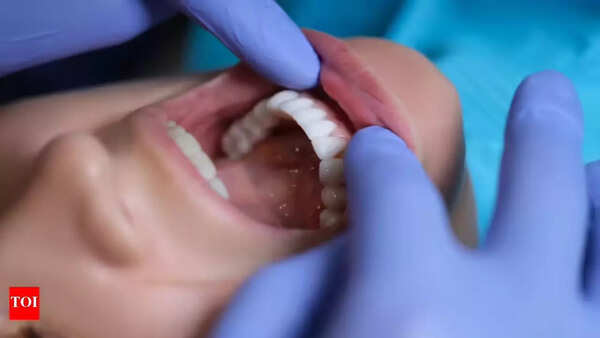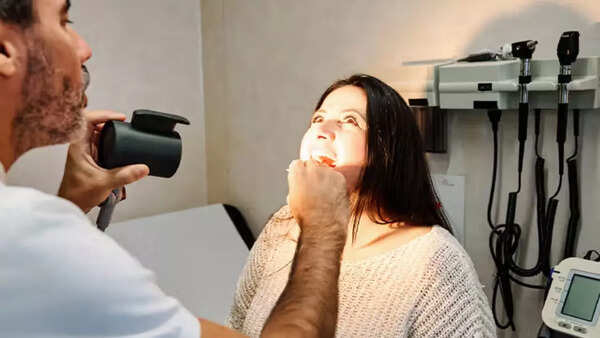Oral cancer, also known as mouth cancer, is a serious condition that develops in the tissues of the oral cavity. This includes the lips, tongue, gums, inner cheeks, and the roof or floor of the mouth. In some instances, it can also affect the oropharynx, which is the area at the back of the throat. Often starting as a painless sore or patch, it can easily go unnoticed in its early stages. Regular dental checkups and self-examinations are crucial for early diagnosis. While anyone can be affected, certain lifestyle choices, such as tobacco and alcohol use, significantly increase the risk. Early detection and prompt treatment are essential for improving outcomes and survival rates.
Oral cancer is a type of head and neck cancer that originates in the tissues of the mouth. This includes the lips, tongue, cheeks, gums, and the floor and roof of the mouth, and sometimes the oropharynx. It typically manifests as a persistent sore, patch, or lump that doesn't heal and might be mistaken for a minor issue initially.
If left unaddressed, oral cancer can spread to nearby structures like lymph nodes, other areas of the head and neck, and in advanced cases, to distant organs. Despite its potential severity, oral cancer is highly treatable when diagnosed early.
While oral cancer predominantly affects individuals aged 60 and older, it can also occur in younger people. Men are statistically twice as likely to develop it compared to women. White men have a higher incidence rate than Black men. Approximately 11 out of 100,000 people will be diagnosed with oral cancer during their lifetime.
A significant concern is that many early symptoms are painless and subtle, leading to delays in diagnosis and treatment.

Oral cancer often presents as persistent changes in the mouth that do not resolve. These can include:
Visible Signs:
Sensory and Functional Symptoms:
These symptoms can sometimes resemble other conditions like infections or ulcers, but their persistence should prompt concern and medical evaluation.

Performing a monthly self-exam can help in the early identification of unusual changes:
If you notice anything unusual, it is crucial to consult a healthcare professional immediately.

Oral cancer can significantly impair a person’s ability to speak, chew, swallow, and even breathe, depending on the tumor’s location and size. When it affects the oropharynx, it can lead to oropharyngeal cancer, impacting the base of the tongue, soft palate, tonsils, and the back of the throat.
The oral cavity, where oral cancer typically begins, includes:
Oral cancer starts in squamous cells, which are thin, flat cells lining the inside of the mouth. When these cells undergo mutations—often due to prolonged exposure to carcinogens—they begin to multiply uncontrollably, forming tumors.
Major Risk Factors:
According to reports, approximately 25% of oral cancer cases occur in individuals without any of the above risk factors, highlighting the importance of regular oral screenings.
Diagnosis usually starts during routine dental or medical checkups. Dentists often play a crucial role in early detection.
Diagnostic methods include:
Once a lesion is confirmed as cancerous, additional tests are performed to determine the stage, which influences treatment options.
Oral cancer is staged using the TNM system:
Staging helps doctors determine the most effective treatment approach and estimate the patient’s prognosis.
While not all cases can be prevented, the risk can be significantly reduced by:
Life after oral cancer treatment varies. Some patients experience minor changes, while others face long-term impacts on speaking, chewing, and appearance. Support through reconstructive surgery, physical therapy, speech therapy, and mental health counseling may be necessary. Ongoing check-ups are crucial, as recurrence or secondary cancers are possible.
Newer articles
Older articles
 Android Security Alert: Government Warns of Critical Flaws Exposing User Data
Android Security Alert: Government Warns of Critical Flaws Exposing User Data
 5 Overlooked Warning Signs of Colon Cancer: Early Detection Saves Lives
5 Overlooked Warning Signs of Colon Cancer: Early Detection Saves Lives
 Ashada Gupt Navratri 2025: Dates, Significance, and How to Observe This Hidden Festival
Ashada Gupt Navratri 2025: Dates, Significance, and How to Observe This Hidden Festival
 Shukla's ISS Arrival Heralds New Era for Indian Space Exploration; Gaganyaan Mission Looms
Shukla's ISS Arrival Heralds New Era for Indian Space Exploration; Gaganyaan Mission Looms
 Milne, Henry Earn New Zealand Recall for T20I Tri-Series; Uncapped Jacobs Included
Milne, Henry Earn New Zealand Recall for T20I Tri-Series; Uncapped Jacobs Included
 X (Formerly Twitter) Bans Half a Million Accounts in India Amid Policy Crackdown
X (Formerly Twitter) Bans Half a Million Accounts in India Amid Policy Crackdown
 xAI to Open Source Grok Chatbot: Musk Pushes for Accessible AI, Accuses OpenAI of Betrayal
xAI to Open Source Grok Chatbot: Musk Pushes for Accessible AI, Accuses OpenAI of Betrayal
 Indian Astronaut Shubhanshu Shukla to Connect with Students, ISRO Scientists from Space
Indian Astronaut Shubhanshu Shukla to Connect with Students, ISRO Scientists from Space
 20 Minutes to a Healthier You: Neurologist's Simple Steps to Reduce Cholesterol, Blood Pressure, and Dementia Risk
20 Minutes to a Healthier You: Neurologist's Simple Steps to Reduce Cholesterol, Blood Pressure, and Dementia Risk
 Google Maps to Sharpen Navigation with Fused Orientation Provider API Update
OR
Google Maps Enhances Directional Accuracy with Fused Orientation Provider API Upgrade
OR
Google Maps Update Targets Improved Navigation Accuracy via Enhanced API
Google Maps to Sharpen Navigation with Fused Orientation Provider API Update
OR
Google Maps Enhances Directional Accuracy with Fused Orientation Provider API Upgrade
OR
Google Maps Update Targets Improved Navigation Accuracy via Enhanced API